
This week’s lesson continues from part 1 of Noah’s Ark. If you missed it, you may download it from truewaykids.com for free. This week’s lesson focuses on God’s promises and faithfulness. Our Bible reading is Genesis 8-9. Some of our key points are:
- God always keeps His promises.
- We must wait for God’s timing.
- We should give thanks to God.
Lesson Guide – God keeps His Promises
It is important that your child understands what it means to make and keep a promise. Ask them if they know what it means and give them gentle direction and explain to define further.
Ask if your child thinks it is important to keep a promise. Share a time you promised to do something, but something happened, and you were unable to keep your promise. Explain how God is not like us. God is all powerful and nothing can hinder Him.
Think about a time you promised to do something with your child and they had to wait. For example, go to the park after cleaning the house. Share that it is sometimes hard to wait for a promise. Noah and his family were in the ark for a long time, but they kept trusting God and His promise to keep them safe.
God took care of Noah and his family even while they were waiting. It is important for us to always thank God for taking care of us.
Show a picture of a rainbow. Review the colors with your child. Explain that God put the rainbow in the sky to remind us that He always keeps His Promises.
Learn and repeat together: Numbers 23:19 ‘Whatever God promises, He does.”
Ask your child if they know any promises God has made. Share with the child some of God’s other promises from the Bible. This week’s craft includes seven Bible promises. One for each color of the rainbow. The craft could also be used to review one promise each day. For example, make the cloud and attach the red on day one and then add one more color each day for the rest of the week, learning a new promise each day.
Bible lesson video
God keeps His Promises – Bible story for kids
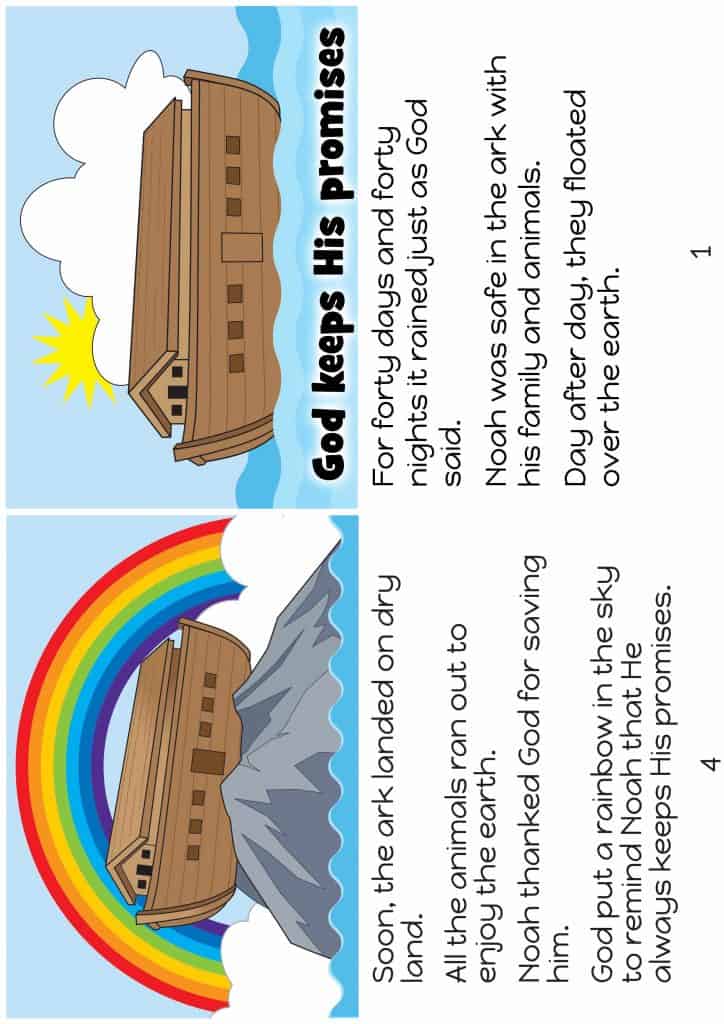
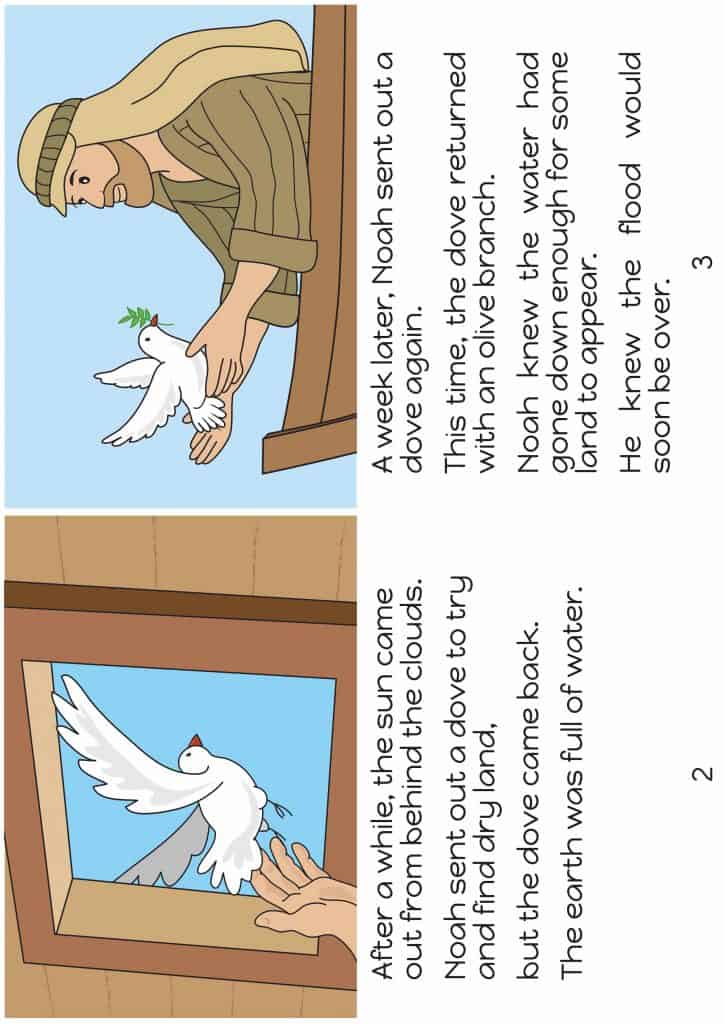
Games and Activities
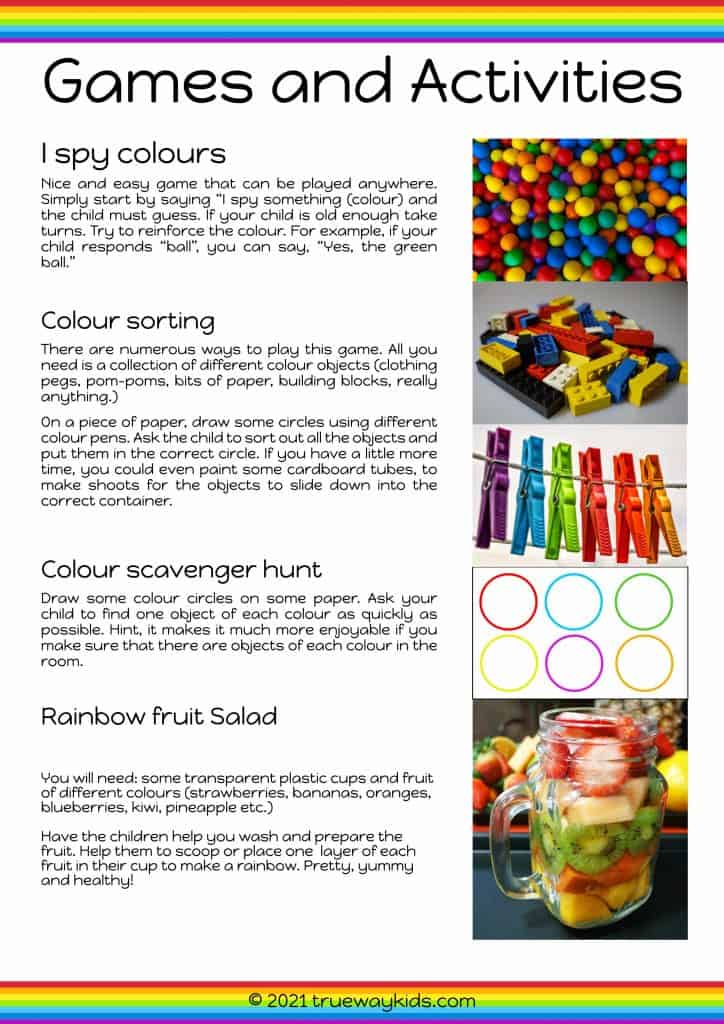
I spy colors
Nice and easy game that can be played anywhere. Simply start by saying “I spy something (color) and the child must guess. If your child is old enough, take turns. Try to reinforce the color. For example, if your child responds “ball”, you can say, “Yes, the green ball.”
Color sorting
There are numerous ways to play this game. All you need is a collection of different colored objects (clothing pegs, pom-poms, bits of paper, building blocks, really anything.)
On a piece of paper, draw some circles using different color pens. Ask the child to sort out all the objects and put them in the correct circle. If you have a little more time, you could even paint some cardboard tubes, to make shoots for the objects to slide down into the correct container.
Color scavenger hunt
Draw some color circles on some paper. Ask your child to find one object of each color as quickly as possible. Hint, it makes it much more enjoyable if you make sure that there are objects of each color in the room.
Rainbow fruit Salad
You will need: some transparent plastic cups and fruit of different colors (strawberries, bananas, oranges, blueberries, kiwi, pineapple etc.)
Have the children help you wash and prepare the fruit. Help them to scoop or place one layer of each fruit in their cup to make a rainbow. Pretty, yummy and healthy!
Worksheets
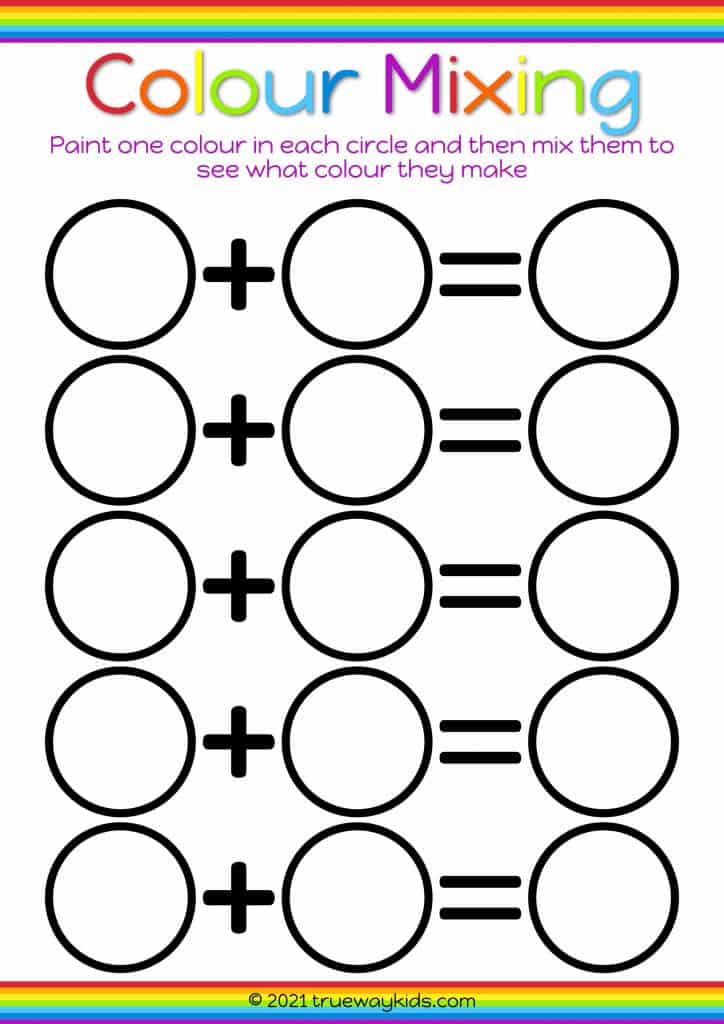
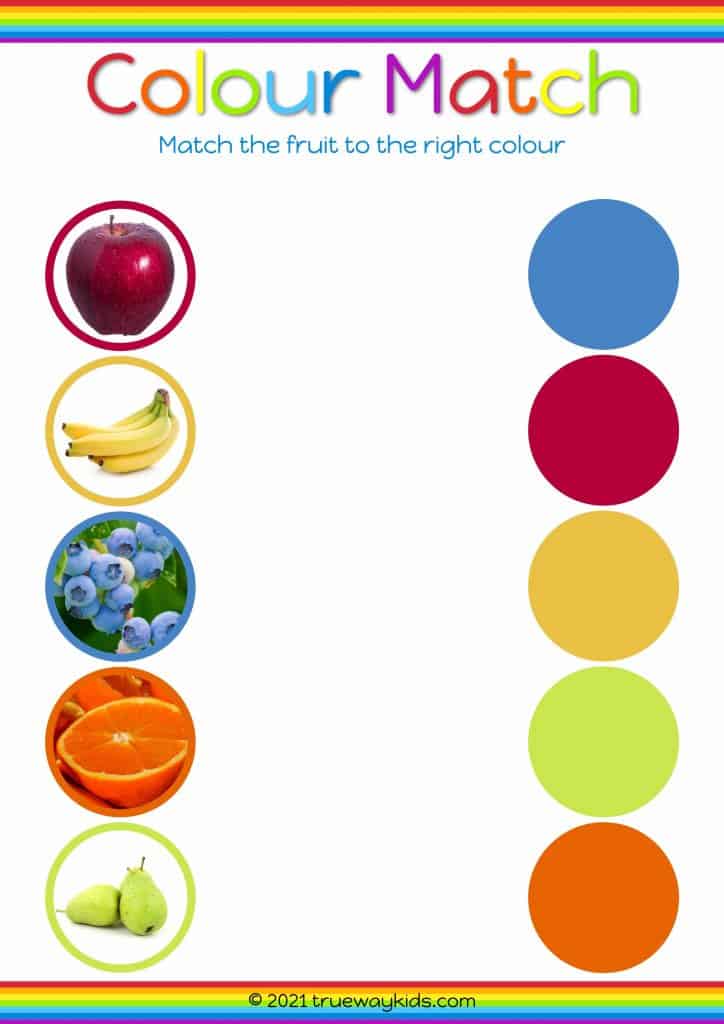
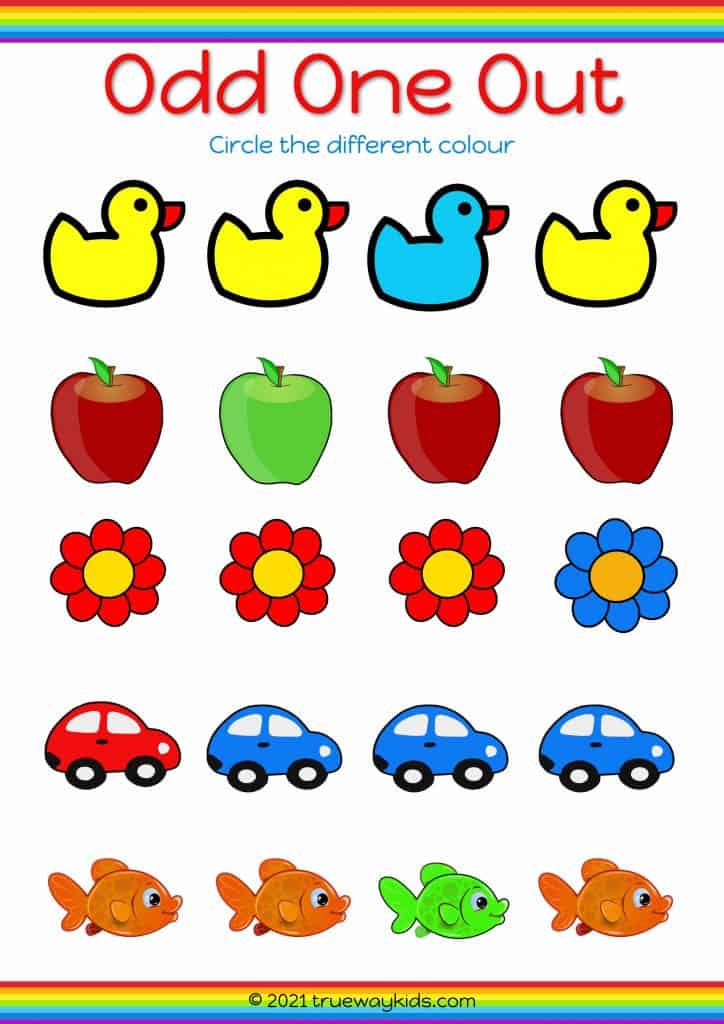
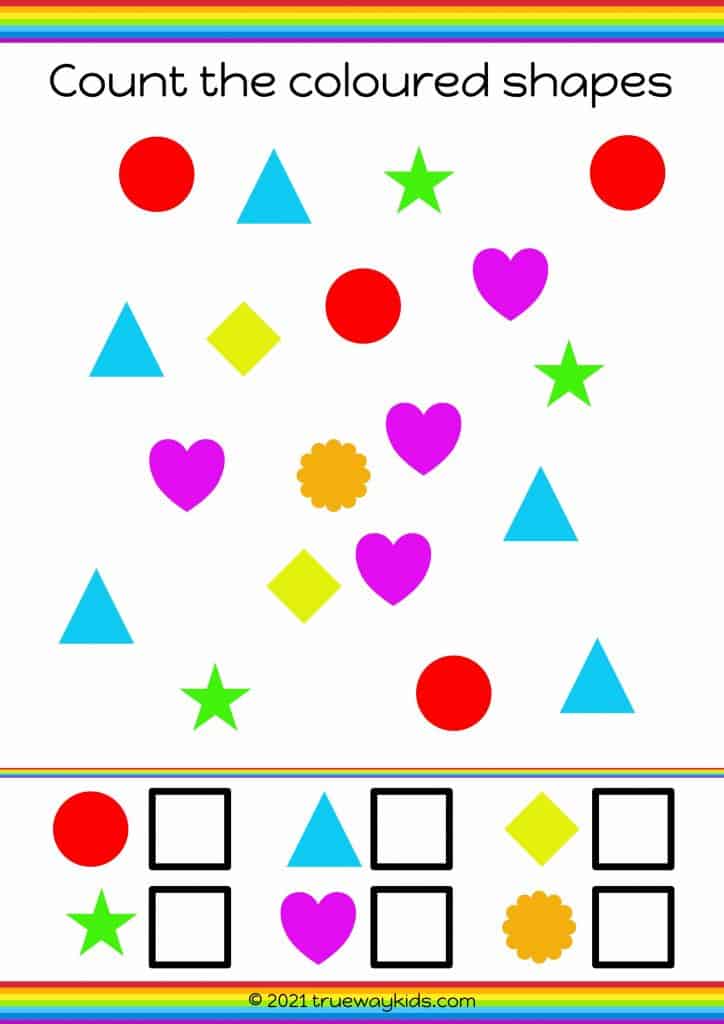
God keeps His Promises – Rainbow coloring pages
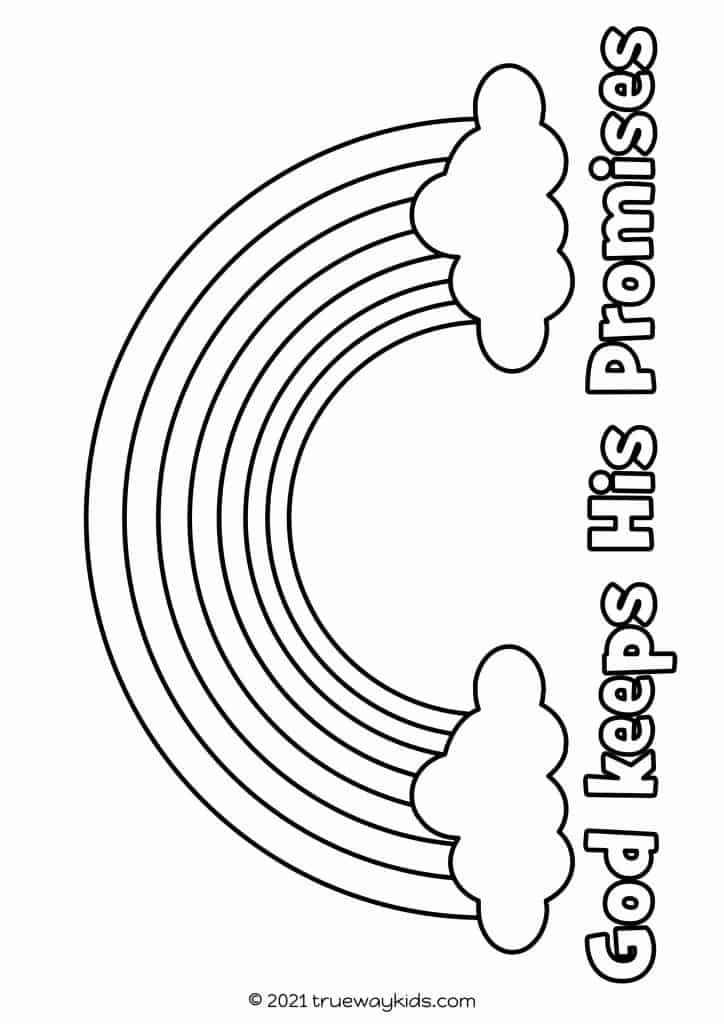




Craft – God’s Rainbow of promises
Craft -3D Rainbow with Ark
Download the lessons for FREE





